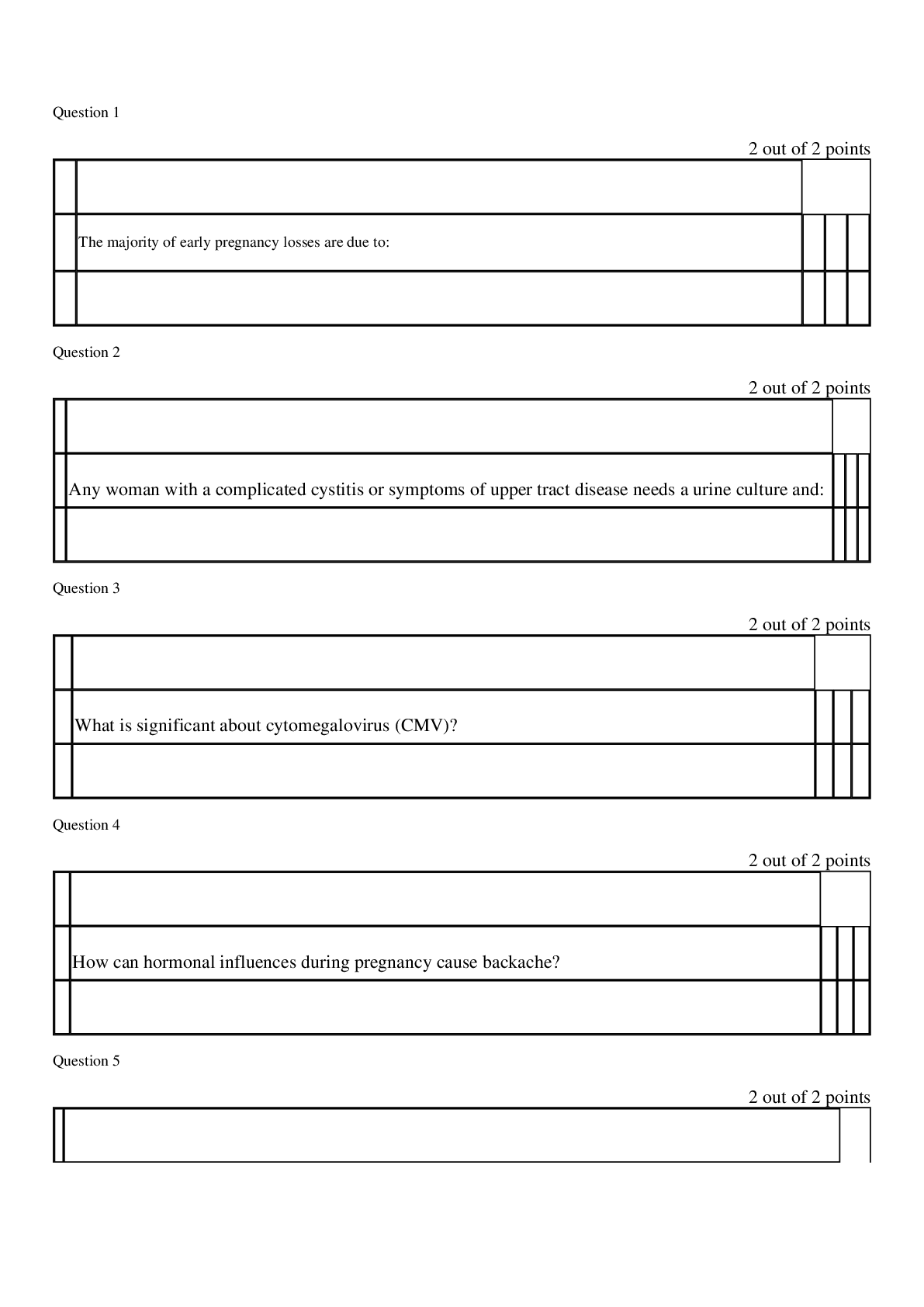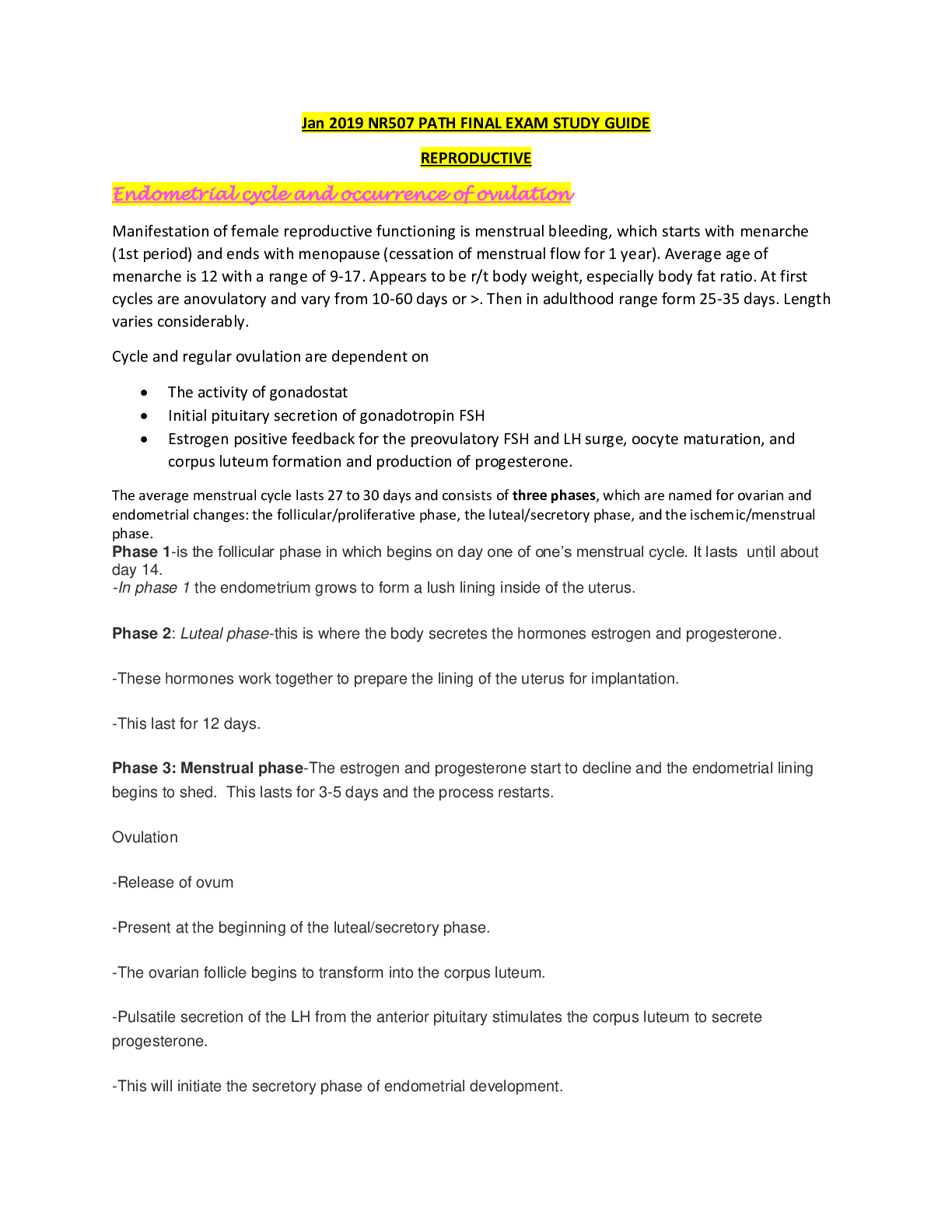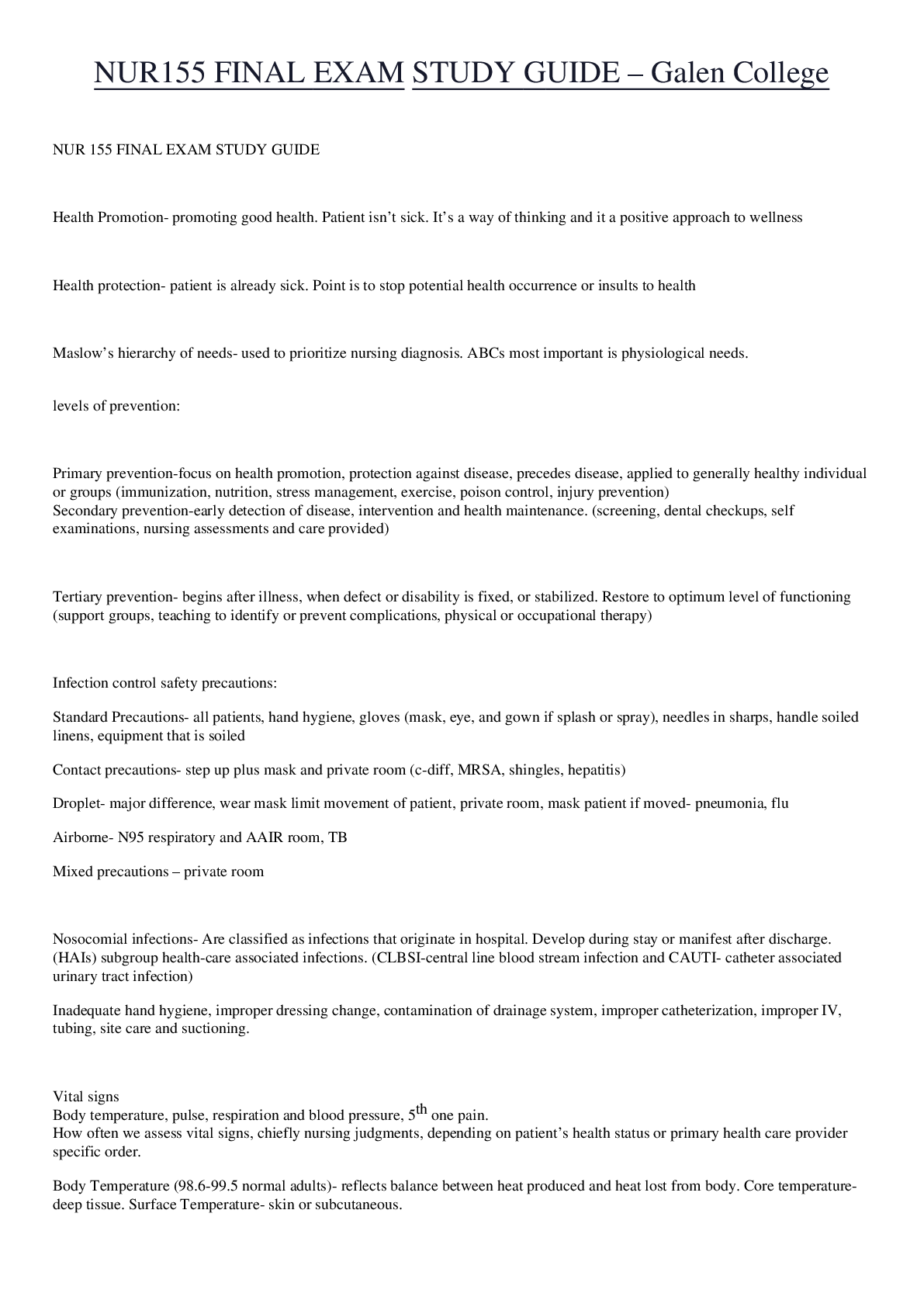*NURSING > STUDY GUIDE > NURSING CORE NURS 222 MH Final Exam Study Guide. LATEST SOLUTION 2020. (All)
NURSING CORE NURS 222 MH Final Exam Study Guide. LATEST SOLUTION 2020.
Document Content and Description Below
1. Conduct Disorder (Cruelty to Animals) Demonstrate a persistent pattern of behavior that violates the rights of others or rules/norms of society. In simpler words… CONDUCT DISORDER = BREAKS LA... WS! MAKE SURE THEY ARE AWARE OF THE RULES OF THE UNIT AND ANY CONSEQUENCES OF VIOLATING THOSE RULES Categories include: *Assess Aggression towards people & animals *Destruction property *Deceitfulness or theft *Serious violation of rules 2. Alcohol Abuse It declines as you age! 3. A nurse is caring for a client with bipolar disorder. Client comes to the nurses’ station at 3 am asking the nurse to call the doctor. Which response is the most appropriate? a. You are being unreasonable b. Go back to your room & I will get in touch later c. I can’t call the doctor until later unless it’s an emergency d. You seem upset, can I help you? 4. Benztropine (Cogentin) Why is it given? *To treat Parkinson disease and also to control tremors and stiffness of the muscles due to antipsychotic medications (antipsychotics 1st-gen) Treats EPS symptoms: (usually the 1st choice – can be given PPX *Acute dystonia- severe spasm of the tongue, neck, face, & back (crisis) *Parkinsonism- bradykinesia, rigidity, shuffling gait, tremors, drooling *Akathisia- inability to sit/stand still & continual pacing & agitation. *Tardive dyskinesia- late EPS, involuntary movement of tongue & face, such as lip smacking & tongue fasciculation, involuntary movement of arms, legs, & trunk. 5. A client is sleepwalking. The nurse should include following discharge (SATA) a. Clutter free b. Sleep on the ground floor c. Lock doors & windows d. Alarm on bed e. Hide car keysc DO NOT rearrange furniture 6. A client fell & had an abrasion on the forehead. Who can write an incident report/variance report? Anyone who actually SAW the incident can write it (NOT he said, she said): *CNA, LVN, or RN the person who witnessed the fall (cosigned by the RN) 7. S/S of Acute Grief Grief is the inner emotional response to loss & is exhibited in as many ways as there are individuals. Emotional S/S: anger, restlessness, resentment, withdrawal, hopelessness, & guilt Somatic S/S: chest pain (tightness), palpitations, headaches, nausea, changes in sleep, fatigue 8. S/S of ADHD Inability of a person to control behaviors requiring sustained attention S/S: impulsive, hyperactive, inattention, & not able to focus well 9. Erikson’s Stages of Development Trust vs. Mistrust (Infancy 0-1½ years) *Forming attachment to mother, which lays foundation for later trust in others. Autonomy vs. Shame & Doubt (Early Childhood 1½-3 years) *Gaining some basic control of self & environment (toilet training, exploration) Initiative vs. Guilt (Preschool 3-6 years) *Becoming purposeful & directive Industry vs. Inferiority (School Age 6-12 years) *Developing social, physical, & school skills Identity vs. Role Confusion (Adolescence 12-20 years) *Making transition from childhood to adulthood; developing sense of identity Intimacy vs. Isolation (Early Adulthood 20-25 years) *Establishing intimate bonds of love & friendship Generativity vs. Self-Absorption (Middle Adulthood 35-65 years) *Fulfilling life goals that involve family, career, & society; developing concerns that embrace future generations Integrity vs. Despair (Later Years 65 years-death) *Looking back over one’s life & accepting its meaning [Show More]
Last updated: 2 years ago
Preview 1 out of 21 pages

Buy this document to get the full access instantly
Instant Download Access after purchase
Buy NowInstant download
We Accept:

Reviews( 0 )
$15.00
Can't find what you want? Try our AI powered Search
Document information
Connected school, study & course
About the document
Uploaded On
Oct 07, 2020
Number of pages
21
Written in
Additional information
This document has been written for:
Uploaded
Oct 07, 2020
Downloads
0
Views
84


























